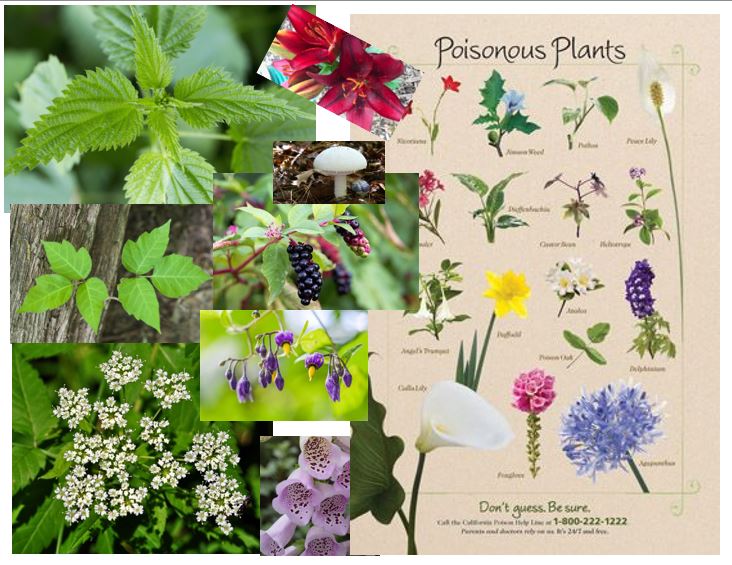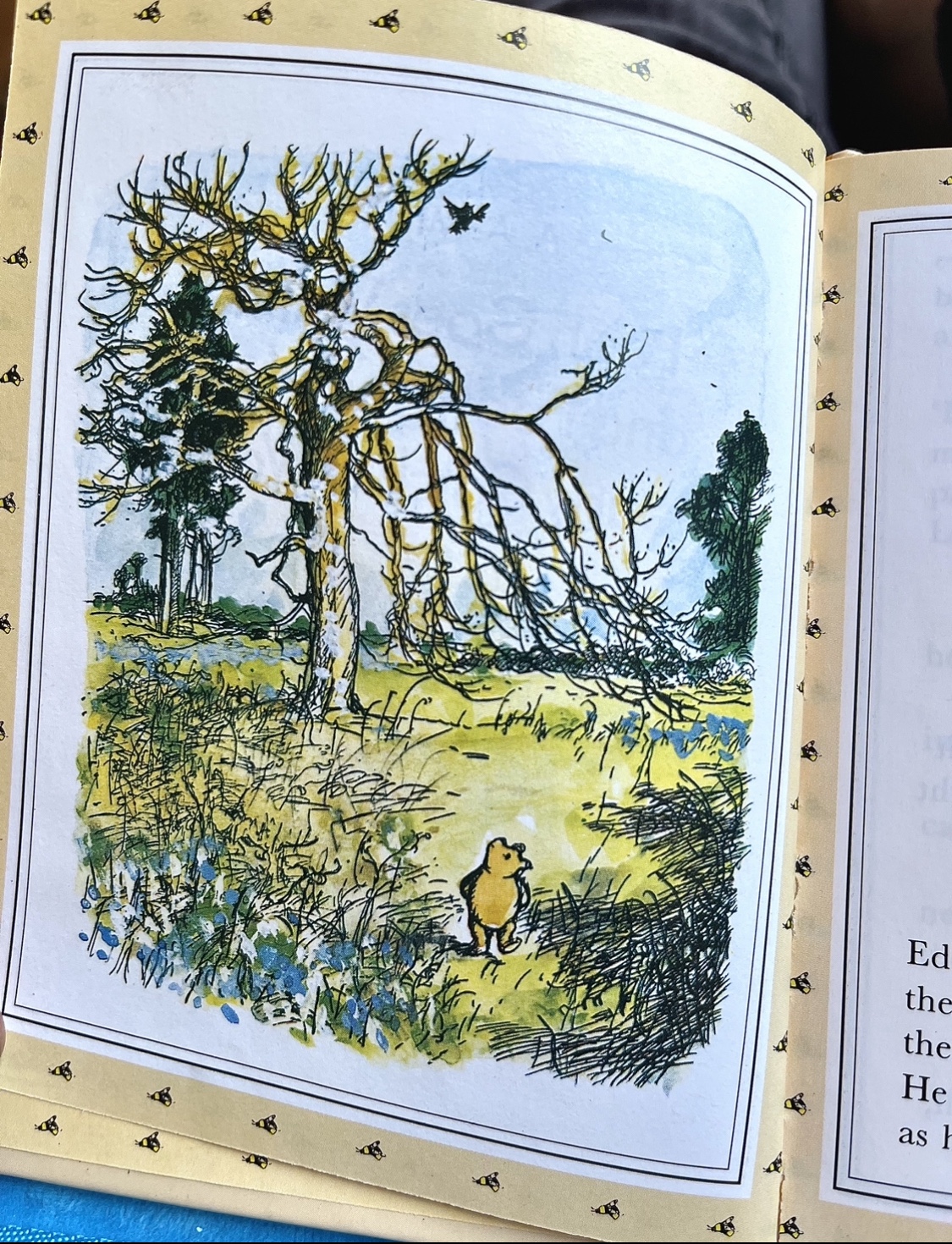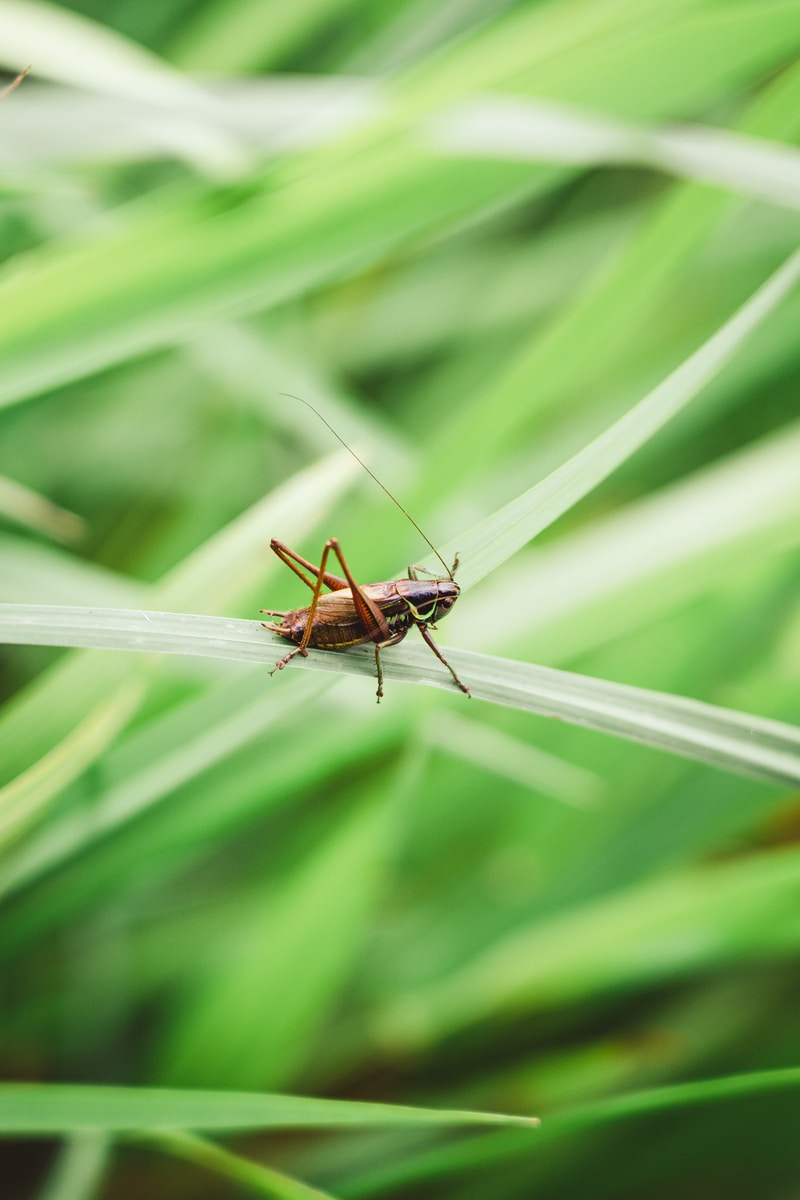⚠️ Ohio Dangerous Plants and Creatures 🕸️

🙅♀️ Beware!! 🕸️🕷️ There are some things that can cause you trouble on the trail! 🕸️
Here is a short list.








Stinging Nettle, Brown Recluse Spider, Poison Ivy, Foxglove, Poison Mushrooms, Don’t Leave Your Tent Door Unzipped!
A CLEVER person solves a problem. A WISE person avoids it.
Albert Einstein
Plants in Ohio to Avoid
- Stinging Nettle
- Poison Ivy
- Pokeweed
- Poison Hemlock
Creatures to Be Aware of
- Black Widows
- Brown Recluses
- Mosquitos
- Coyotes (click here for safety tips)
- Snakes (There are no poisonous snakes in our region (North-Central Ohio))
Stinging Nettle
This one is not originally from Ohio. It’s NOT NATIVE, but was actually brought here from Europe. Great job on that one… hindsight is 20/20. (Maybe Einstein’s quote would have helped…)




Nettle: Pro’s and Con’s
There are both good and bad things about this one! (Really, it’s the same with most plants and creatures in Ohio especially the ones on this list.)
The Bad: Personally, I think this one is WORSE THAN POISON IVY. The itchiness is really tedious and sharp.
Also Tricky: Nettle can grow different heights, coloring can be light green to dark green, and depending on location might have more round or more narrow leaves. (See the images above for photos of various appearances. It’s ALL nettle.)
Personal Story: I did not learn to I.D. this plant, until I was in college, and actually suffered the itchiness of running into the leaves. It was to late for me! (already itching and regretful.) I swore i would learn to avoid Nettle, then and there.

The Good: Once it’s COOKED, it loses its itchiness causing compound. That’s right! It’s edible!!!
I have tried it in a Spring Leek Soup from a foraged foods website… and it really was delicious.
Basic Recipe:
Boil some water or chicken broth. Add leeks and potatoes. turn the heat down to a simmer, then add the nettle … And … Voila!
SOPA PRIMAVERA. (Springtime Soup)
The best time to gather nettle is when the leaves are newly spouting, typically this is in early spring. It’ more tender, and has sort of a light green, fresh earthy flavor. It feels like eating a grassy meadow.
Be sure you’re wearing thick gloves (leather work gloves, or deerskin driving gloves are my favorite for this kind of foraging.)
Keep your gloves on while you’re chopping in the kitchen, too!
More About Eating Stinging Nettle.
https://www.ediblewildfood.com/stinging-nettle.aspx
Also edible: (But an entirely different plant: Dead Nettle.) It springs up early in Ohio, one of the first “weeds” to leaf out at the end of winter. It has purple flowers and looks similar to upright Creeping Charley.
Want to learn more about edible plants you can find in nature? Here some food-related posts I wrote on Native Joy Garden’s blog. Keep checking back for more.
Poison Ivy




Oops! One of those above images is NOT POISON IVY. Did you catch my mistake?
(One is Nettle. Just trying to review what we learned, so far!) 😆
Just in case that tricked you… let’s learn three ways to identify poison ivy:

- “Leaves of Three Leave it Be.”
- “Berries White, Run in Fright.”
- “Hairy Vine, No Friend of Mine.”
🍃 “Leaves of Three, Leave it Be.”
Poison ivy usually grows with three leaflets, but sometimes the lower shoots or new growth may look different — don’t let it fool you! The rule still stands: If you see three, let it be.
🦌 Crazy but true:
Deer can eat poison ivy with no problem at all! Their digestive systems handle the toxic oils just fine. So if you see nibbled vines, it doesn’t mean it’s safe for you — just that Bambi got there first!

🍃 “Berries White, Run in Fright.”
These small, waxy white berries grow in clusters and are a warning sign of poison ivy or poison oak. They often appear in late summer to fall. While birds may eat them, they’re toxic to humans and can trigger a severe rash just like the leaves or vines.
🔍 What to Look For:
- Small white or off-white berries
- Growing from a thin, hairy vine or a woody stem
- Often found along trails, fence lines, or wooded edges
🚫 Do Not Touch — Even Bare Branches Can Cause a Reaction!

🌿 “Hairy Vine, No Friend of Mine.”
Poison ivy often grows as a fuzzy, hairy vine climbing up trees or fences. Those root-like hairs help it cling tightly — a big red flag!
🍇 Notice the Details!
Some wild grapevines (and cultivated hydrangea vines) may look similar from a distance, but grapevines are a different texture, and their leaves are big, jagged, and very different from poison ivy.
☂️ Sneaky trick:
The hairy vine might be hidden underneath a burst of three-leaf clusters that spread out like little green umbrellas. So while you’re hiking, brushing past a leafy branch might actually mean you’re touching poison ivy — even if the vine isn’t obvious.

Here is a good website to learn about some of the poison ivy lookalikes.
DO NOT EAT These:



%2Fbittersweet-nightshade-berries-big-56a00fbe5f9b58eba4aeb8f4.jpg&f=1&nofb=1&ipt=de2895f884dd9867e6cc2aadef062ab24125de01477c294c10cacc9771991381)
Pictured Above: Burning Bush, Poison Hemlock, Pokeweed, Purple Nightshade.
Only ONE of these Four Dangerous Plants is NATIVE to Ohio. Do you know which one?
(Answer: The Poke Berry was actually used by native americans and early pioneer settlers to dye fabrics.)
Poison Hemlock
This is the worst poisonous plant in all of Ohio.
It does stuff to your nervous system… and also smells like carrots!!! How rude.
Don’t let it trick you into eating.
Short video showing photos of Poison Hemlock in Ohio

Here is a great website for more details about Poison Hemlock.
You can see the various life-stages of the plant, including the way it looks as a cute little seedling. Don’t be fooled! it’s not cute.
(That website is Published by Cornell University, but also includes photos from Ohio State research.)
Tips to Avoid Mosquito Bites:
Zip Your Tent Door Shut
Especially around dusk, when mosquitos are the worst.




Wear Lighter Colors
Do not wear DARK COLORS. Mosquitos tend to be attracted to darker clothing and fabrics. See the image below, from WoodlandWoman.ca an actual photo of her getting attacked by a swarm of mosquitos in Canada.

(Photography Credit: Biting Insects: What Works and What Doesn’t?)
Repellent / Bug Spray
Bug sprays like DEET, picaridin (that’s another name for icaridin), and oil of lemon eucalyptus work well if you use the right amount on your skin or clothes. There’s also something called permethrin that keeps bugs away too, but permethrin should only be sprayed on clothes—not on your skin.
TIP: Try not to combine bug spray with sunscreen because it may cause the bug spray chemicals to absorb into your skin more.
Coyotes
🐺 Coyote Safety Tip
Coyotes are usually not a danger to humans and prefer to avoid people. But if you see a pack of them or if you’re injured, it’s important to stay calm.
🚫 DO NOT RUN.
Running can trigger their chase instinct. Instead:
- Back away slowly and quietly.
- Avoid sudden movements or loud noises.
- Make yourself look big if they get too close.
🍂 Why more sightings in fall?
That’s when young coyotes are just old enough to leave the den and start exploring on their own — so you’re more likely to spot them out and about!

(Photography credit: BerryPatchFarms)
Here is a Website with Some Details on Coyote Safety Tips.
Never Stop Exploring
I made this for a presentation at a local American Heritage Girls Troop Camp Out. The troop members are working on their badges for various skills, outdoor skills, survival, etc. This topic aligns with the AHG badgework requirement: “Learn about dangerous plants and animals in your area” Hope you found it helpful and informative!
Want to Learn More?
Check out the FREE Printable Booklet below.






















